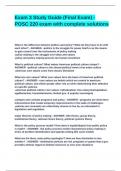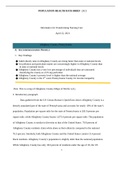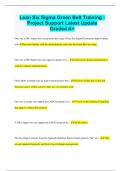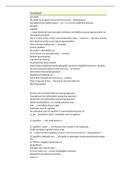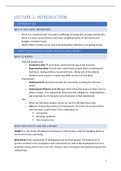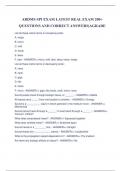Exam (elaborations)
Exam 3 Study Guide (Final Exam) - POSC 220 exam with complete solutions
- Course
- Institution
What is the difference between politics and policy? What do they have to do with each other? -politics is the struggle for power itself or as the means to gain control over the instruments of policy making -policy making is the struggle over ideas and values -policy and policy making process are...
[Show more]
